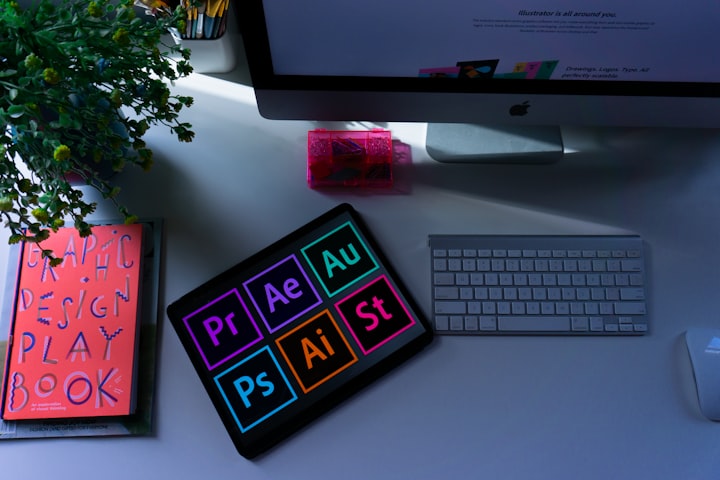Designing for the Web: Best Practices and Techniques for Web Designers
website design , web designer , Graphic Designer

Definition of web design:
Web design is the process of creating and designing the visual layout, user interface, and user experience of a website or web-based application. It involves the use of various design elements such as typography, color, imagery, and layout to create an aesthetically pleasing and functional website that meets the needs of the target audience and the client. Web designers use a combination of technical skills and creative problem-solving to create effective web-based solutions that are visually appealing, easy to navigate, and optimized for search engines. They also take into account the usability, accessibility and inclusivity, responsive design and other best practices for web design. Web design encompasses a wide range of disciplines, including graphic design, user interface design, user experience design, and front-end web development.
The Process of Web Design:
The process of web design typically involves several stages, including:
- Research and Planning: In this stage, the designer gathers information about the client and their target audience, and defines the goals and objectives of the website. This includes researching the client's industry, competitors, and target audience, as well as determining the website's purpose and the desired user experience.
- Concept Development: This stage involves the creation of rough sketches, wireframes, and mockups to develop the overall layout and visual design of the website. The designer will also consider the website's hierarchy, navigation, and content structure.
- Design Execution: In this stage, the designer creates the final visual elements of the website, such as the logo, color scheme, typography, and imagery. The designer will also develop the website's layout and user interface, taking into account best practices for web design such as usability, accessibility, and responsive design.
- Final Production and Delivery: The designer will then take the final design and develop the website using web development technologies such as HTML, CSS and JavaScript. The website will then be tested for errors and compatibility with various devices and browsers. The final product will be delivered to the client and any necessary adjustments will be made based on the client's feedback.
- Maintenance and Updating: After the website is launched, web designers will continue to monitor and update the site to ensure it remains up-to-date, relevant, and functional.
This is a general overview of the process of web design, and each project may have variations depending on the complexity of the website and the specific needs of the client. Overall, the goal of the web design process is to create a visually pleasing and functional website that meets the needs of the target audience and the client.
Web Design Best Practices:
Web design best practices are guidelines and standards that help ensure a website is visually pleasing, easy to navigate, and user-friendly. Some of the most important best practices in web design include:
- Usability: A website should be easy to navigate and understand, with a clear hierarchy and logical organization of content. The website should also be optimized for the user's needs and goals.
- Accessibility and Inclusivity: Websites should be designed to be accessible to people with disabilities and to be inclusive to all users, regardless of their abilities, culture or background.
- Responsive Design: Websites should be designed to adapt to different screen sizes and resolutions, ensuring that the website is optimized for viewing on different devices, such as desktop computers, laptops, tablets, and smartphones.
- Search Engine Optimization (SEO): Websites should be optimized for search engines, in order to rank well in search results and be easily found by potential users. This includes optimizing the website's content, structure, and code for search engines.
- Content and Navigation: The website should have clear and concise content that is easy to read, and the navigation should be intuitive and consistent throughout the website.
- Speed and Performance: The website should be designed to load quickly, with minimal use of large images, videos, and other media that can slow down the loading time.
- Microinteractions: Microinteractions are small interactions that happen in the interface, like hovering over an icon, a progress bar, or a pull-to-refresh gesture. They are becoming increasingly important in web design as they make the experience more engaging and interactive.
- Security: The website should be designed with security in mind, using appropriate measures such as encryption and secure socket layer (SSL) certificates to protect sensitive information.
- Branding and Identity: The website should be consistent with the client's brand and visual identity, including the use of the client's logo, colors, and typography.
- Testing and Optimization: The website should be tested for errors and compatibility with various devices and browsers, and optimized for performance and usability.
These are just a few examples of web design best practices, and designers may use others depending on the specific needs of the project. The goal of web design best practices is to create a website that is visually pleasing, easy to navigate, and optimized for both users and search engines.
Web Design Software and Tools:
There are many software and technology tools that are used in web design, some of the most popular ones include:
- Adobe Creative Suite: This is a collection of software programs that are widely used in the web design industry. It includes programs such as Photoshop (for photo editing and manipulation), Illustrator (for vector graphics and illustrations), and Dreamweaver (for web development and design).
- Sketch: A vector graphics editor and digital design tool primarily used for user interface and user experience design.
- Figma: A browser-based interface design tool that enables real-time collaboration among team members.
- InVision: A prototyping and design collaboration tool that allows designers to create interactive wireframes, mockups, and animations.
- Axure: A wireframing and prototyping tool for web and mobile designers, with built-in collaboration features.
- Adobe XD: A user experience design software by Adobe, used for creating wireframes, prototypes, and visual designs for websites and mobile apps.
- Webflow: A web design tool that allows designers to create responsive and dynamic websites using a visual editor, without coding.
- Balsamiq: A wireframing tool that allows designers to create low-fidelity wireframes quickly and easily.
- Adobe Illustrator: A vector graphics editor that is used for creating and editing vector graphics, such as logos, illustrations, and icons.
- Sublime Text: A popular code editor that is often used by web designers to write and edit HTML, CSS, and JavaScript code.
These are just a few examples of the many software and technology tools that are used in web design. Other tools include Photoshop, GIMP, Adobe After Effects, HTML5, CSS, JavaScript and many more. Web designers may use one or more of these tools depending on their specific design needs and preferences.
Conclusion:
In conclusion, web design is the process of creating and designing the visual layout, user interface, and user experience of a website or web-based application. It involves the use of various design elements such as typography, color, imagery, and layout to create an aesthetically pleasing and functional website that meets the needs of the target audience and the client. The process of web design typically involves several stages including research and planning, concept development, design execution, final production and delivery and maintenance and updating. Web design best practices are guidelines and standards that help ensure a website is visually pleasing, easy to navigate, and user-friendly. There are many software and technology tools that are used in web design, such as Adobe Creative Suite, Sketch, Figma, InVision, Axure, Adobe XD, Webflow, Balsamiq, Adobe Illustrator and Sublime Text. As the digital landscape continues to evolve, the field of web design will also continue to change and adapt to meet the needs of clients and audiences.





Comments
There are no comments for this story
Be the first to respond and start the conversation.